-
 Bitcoin
Bitcoin $85,667.5889
1.45% -
 Ethereum
Ethereum $1,645.0464
1.09% -
 Tether USDt
Tether USDt $0.9999
0.01% -
 XRP
XRP $2.1508
1.30% -
 BNB
BNB $589.4345
-0.06% -
 Solana
Solana $131.4976
-0.50% -
 USDC
USDC $0.9999
0.00% -
 TRON
TRON $0.2514
-1.73% -
 Dogecoin
Dogecoin $0.1601
-2.43% -
 Cardano
Cardano $0.6447
0.89% -
 UNUS SED LEO
UNUS SED LEO $9.4306
0.49% -
 Chainlink
Chainlink $12.7413
0.32% -
 Avalanche
Avalanche $20.0223
0.06% -
 Stellar
Stellar $0.2413
0.24% -
 Toncoin
Toncoin $2.9581
4.42% -
 Sui
Sui $2.2029
-2.07% -
 Shiba Inu
Shiba Inu $0.0...01196
-1.39% -
 Hedera
Hedera $0.1666
0.16% -
 Bitcoin Cash
Bitcoin Cash $335.2737
-1.78% -
 Litecoin
Litecoin $78.2670
0.57% -
 Polkadot
Polkadot $3.6968
1.17% -
 Hyperliquid
Hyperliquid $16.3661
2.35% -
 Dai
Dai $1.0000
0.00% -
 Bitget Token
Bitget Token $4.3524
2.42% -
 Pi
Pi $0.7432
-1.22% -
 Ethena USDe
Ethena USDe $0.9990
0.02% -
 Monero
Monero $212.4190
2.42% -
 Uniswap
Uniswap $5.4203
0.01% -
 OKB
OKB $52.2810
-1.31% -
 Pepe
Pepe $0.0...07441
0.12%
How to set a custom node in Coinomi Wallet?
Setting up a custom node in Coinomi Wallet can improve performance and privacy; follow our guide to connect to trusted nodes and manage your cryptocurrencies effectively.
Apr 08, 2025 at 05:42 pm
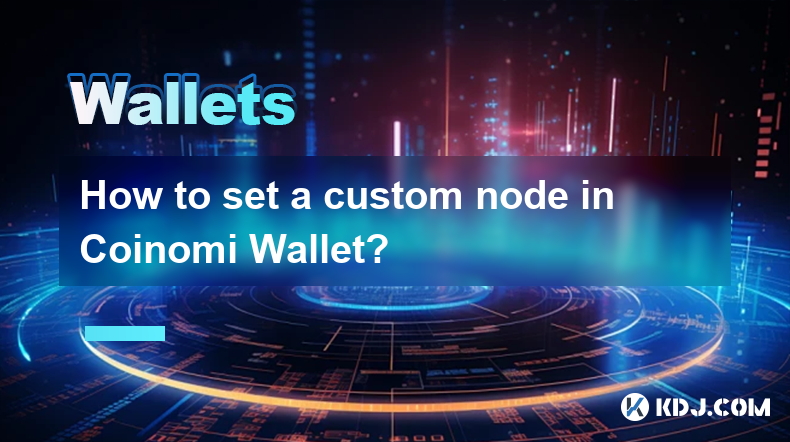
Setting a custom node in Coinomi Wallet can enhance your cryptocurrency management experience by allowing you to connect to specific nodes for better performance or privacy. This guide will walk you through the process of setting up a custom node in Coinomi Wallet, ensuring you can tailor your wallet to your specific needs.
Understanding Custom Nodes in Coinomi Wallet
Before diving into the setup process, it's important to understand what a custom node is and why you might want to use one. A custom node is a server that you specify for your wallet to connect to instead of using the default nodes provided by the wallet. Using a custom node can offer benefits such as improved connection speeds, enhanced privacy, and the ability to connect to nodes you trust.
Preparing to Set Up a Custom Node
To set up a custom node, you'll need to gather some information beforehand. You'll need the IP address or domain name of the node, the port number, and any additional parameters required by the specific cryptocurrency you're using. For example, Bitcoin nodes typically use port 8333, while Ethereum nodes use port 30303.
Accessing Coinomi Wallet Settings
To begin setting up your custom node, you'll need to access the settings within Coinomi Wallet. Here's how to do it:
- Open the Coinomi Wallet app on your device.
- Navigate to the Settings menu, usually found by tapping the gear icon or selecting "Settings" from the main menu.
- Scroll down to find the Network Settings or Node Settings section.
Adding a Custom Node for a Specific Cryptocurrency
Once you're in the Network Settings, you can add a custom node for a specific cryptocurrency. Here's how to do it:
- Select the cryptocurrency for which you want to add a custom node. This will open the settings for that specific coin.
- Look for an option labeled Custom Node or Add Custom Node.
- Enter the IP address or domain name of the node you want to use.
- Enter the port number associated with the node.
- If required, enter any additional parameters such as username and password for the node.
Verifying the Custom Node Connection
After entering the details of your custom node, it's crucial to verify that the connection is successful. Here's how to do it:
- Save the custom node settings and return to the main wallet interface.
- Check if the wallet is able to synchronize with the blockchain using the new node. This might take a few moments.
- If the wallet successfully connects and syncs, you'll see the balance and transaction history update.
Troubleshooting Common Issues
Sometimes, setting up a custom node can lead to issues. Here are some common problems and how to troubleshoot them:
- Connection Failure: If the wallet fails to connect to the custom node, double-check the IP address, port number, and any additional parameters. Ensure that the node is online and accessible.
- Slow Synchronization: If the wallet is slow to sync, it might be due to the node's performance. Consider using a different node or checking if the node is overloaded.
- Error Messages: If you encounter error messages, review the node settings and ensure all information is entered correctly. You can also try resetting the node settings and re-entering the information.
Managing Multiple Custom Nodes
Coinomi Wallet allows you to manage multiple custom nodes for different cryptocurrencies. Here's how to do it:
- Follow the steps above to add a custom node for each cryptocurrency you want to customize.
- You can switch between nodes by going back to the Network Settings and selecting a different node for each coin.
- Keep track of the performance of each node to ensure you're using the most reliable and efficient ones.
Security Considerations When Using Custom Nodes
When using custom nodes, it's important to consider the security implications. Here are some tips to keep your wallet secure:
- Use Trusted Nodes: Only use nodes from sources you trust to avoid potential security risks.
- Regularly Update Node Information: Keep the node information up to date to ensure you're connecting to the most secure and reliable nodes.
- Monitor Wallet Activity: Regularly check your wallet's activity to ensure there are no unauthorized transactions or suspicious behavior.
Frequently Asked Questions
Q: Can I use a custom node for all cryptocurrencies in Coinomi Wallet?
A: Not all cryptocurrencies in Coinomi Wallet support custom nodes. You'll need to check the specific settings for each cryptocurrency to see if custom nodes are supported.
Q: What happens if the custom node I'm using goes offline?
A: If the custom node goes offline, your wallet may fail to sync with the blockchain. In this case, you can switch to a different node or use the default nodes provided by Coinomi Wallet.
Q: Is it possible to revert to the default nodes after setting up a custom node?
A: Yes, you can revert to the default nodes by going back to the Network Settings for the specific cryptocurrency and removing or disabling the custom node settings.
Q: Can I use a VPN with a custom node in Coinomi Wallet?
A: Yes, you can use a VPN with a custom node. However, ensure that the VPN does not interfere with the connection to the node, and consider the potential impact on connection speeds.
Disclaimer:info@kdj.com
The information provided is not trading advice. kdj.com does not assume any responsibility for any investments made based on the information provided in this article. Cryptocurrencies are highly volatile and it is highly recommended that you invest with caution after thorough research!
If you believe that the content used on this website infringes your copyright, please contact us immediately (info@kdj.com) and we will delete it promptly.
- Galaxy Digital's $40M Ethereum Transfer Raises Eyebrows as Market Reacts
- 2025-04-15 16:00:12
- Publicly Listed Companies Increased Their Bitcoin Holdings by 16.1% in Q1 2025
- 2025-04-15 16:00:12
- Bitcoin Has Rebounded Spectacularly This Week, Trading Close to $85,000
- 2025-04-15 15:55:13
- Galaxy Digital Deposits 25,000 ETH, Raising Questions About Market Intentions
- 2025-04-15 15:50:12
- Mantra Has Just Gone Through A Crash That Has Wiped Out Most Of Its Value. Here's How On-Chain Metrics Have Changed During This Collapse.
- 2025-04-15 15:50:12
- Michael Saylor Does It Again: Strategy (Formerly MicroStrategy) Buys 3,459 BTC
- 2025-04-15 15:45:13
Related knowledge

How do I import MetaMask transaction history?
Apr 12,2025 at 07:35pm
Importing your MetaMask transaction history can be an essential task for managing your cryptocurrency activities. Whether you're looking to keep a record of your transactions for tax purposes or simply want to track your investment performance, understanding how to import your transaction history is crucial. In this article, we'll explore the detailed s...
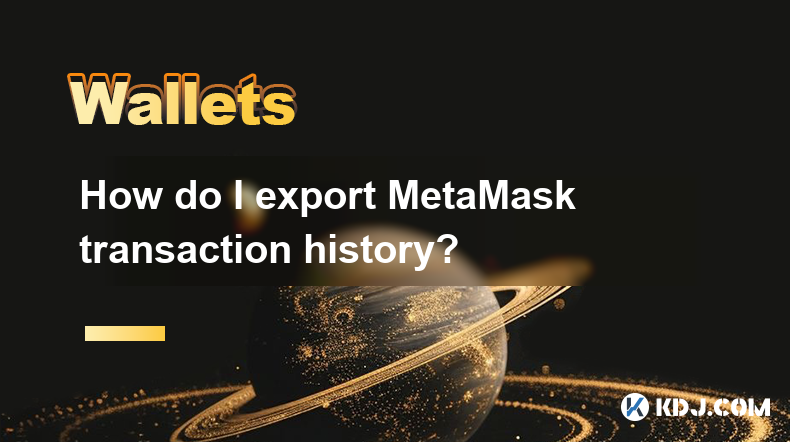
How do I export MetaMask transaction history?
Apr 14,2025 at 05:21am
Exporting your MetaMask transaction history can be a crucial task for keeping track of your cryptocurrency transactions, whether for personal records, tax purposes, or auditing. In this article, we will guide you through the process of exporting your MetaMask transaction history in a detailed, step-by-step manner. Understanding MetaMask Transaction Hist...

How do I verify a message signature in MetaMask?
Apr 14,2025 at 02:49am
Verifying a message signature in MetaMask is a crucial skill for anyone involved in the cryptocurrency space, especially when it comes to ensuring the authenticity and integrity of communications. This process allows you to confirm that a message was indeed signed by the owner of a specific Ethereum address. In this article, we will walk you through the...
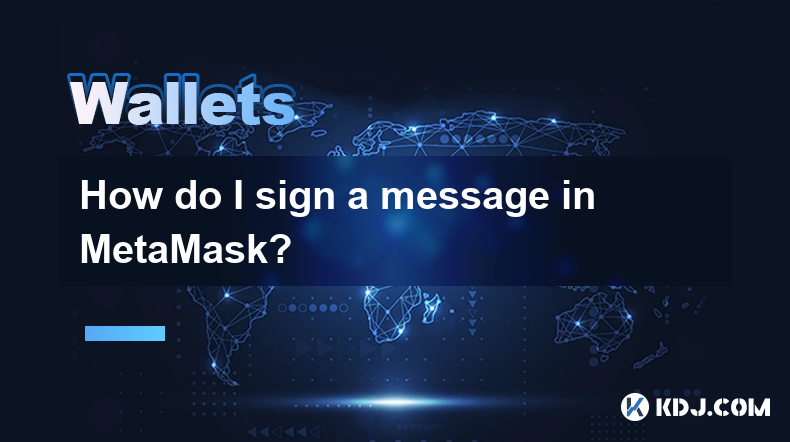
How do I sign a message in MetaMask?
Apr 12,2025 at 08:49pm
Introduction to Message Signing in MetaMaskMessage signing is a crucial feature in the world of cryptocurrencies, particularly when using wallets like MetaMask. It allows users to prove ownership of their wallet address without transferring any funds. This process involves generating a unique signature using your private key, which can then be verified ...
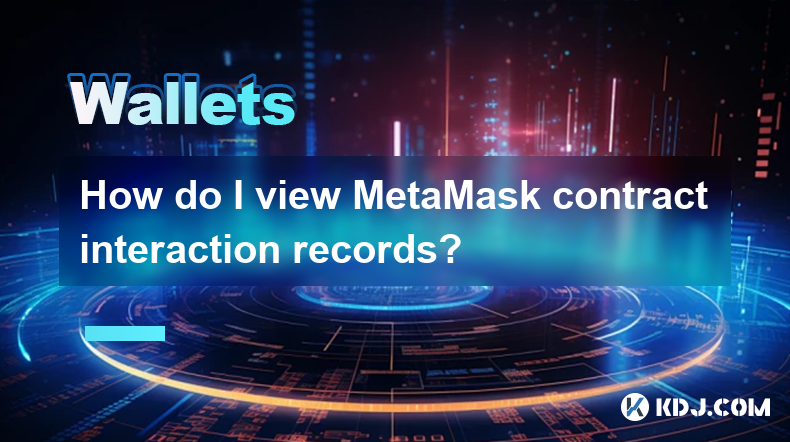
How do I view MetaMask contract interaction records?
Apr 13,2025 at 02:35am
Introduction to MetaMask and Contract InteractionsMetaMask is a popular cryptocurrency wallet that allows users to interact with the Ethereum blockchain and other compatible networks. One of the key features of MetaMask is the ability to interact with smart contracts, which are self-executing programs stored on the blockchain. These interactions can inc...
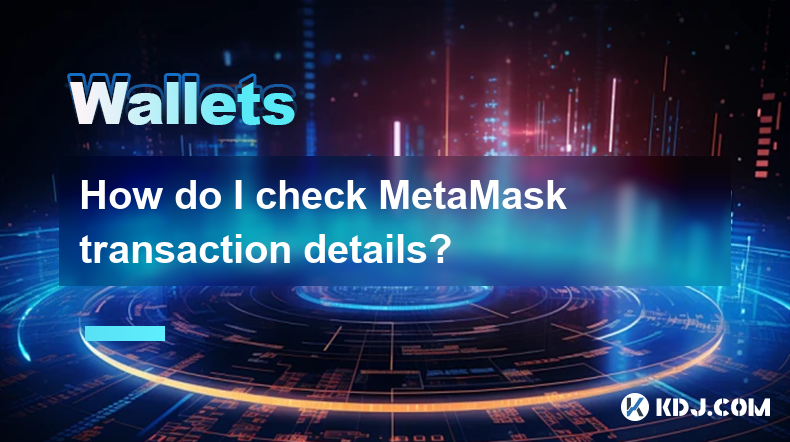
How do I check MetaMask transaction details?
Apr 15,2025 at 02:35pm
Checking MetaMask transaction details is an essential skill for anyone using this popular cryptocurrency wallet. Whether you're tracking a recent transaction, verifying its status, or troubleshooting issues, understanding how to access and interpret transaction details can help you manage your crypto assets effectively. In this article, we'll walk you t...

How do I import MetaMask transaction history?
Apr 12,2025 at 07:35pm
Importing your MetaMask transaction history can be an essential task for managing your cryptocurrency activities. Whether you're looking to keep a record of your transactions for tax purposes or simply want to track your investment performance, understanding how to import your transaction history is crucial. In this article, we'll explore the detailed s...

How do I export MetaMask transaction history?
Apr 14,2025 at 05:21am
Exporting your MetaMask transaction history can be a crucial task for keeping track of your cryptocurrency transactions, whether for personal records, tax purposes, or auditing. In this article, we will guide you through the process of exporting your MetaMask transaction history in a detailed, step-by-step manner. Understanding MetaMask Transaction Hist...

How do I verify a message signature in MetaMask?
Apr 14,2025 at 02:49am
Verifying a message signature in MetaMask is a crucial skill for anyone involved in the cryptocurrency space, especially when it comes to ensuring the authenticity and integrity of communications. This process allows you to confirm that a message was indeed signed by the owner of a specific Ethereum address. In this article, we will walk you through the...

How do I sign a message in MetaMask?
Apr 12,2025 at 08:49pm
Introduction to Message Signing in MetaMaskMessage signing is a crucial feature in the world of cryptocurrencies, particularly when using wallets like MetaMask. It allows users to prove ownership of their wallet address without transferring any funds. This process involves generating a unique signature using your private key, which can then be verified ...

How do I view MetaMask contract interaction records?
Apr 13,2025 at 02:35am
Introduction to MetaMask and Contract InteractionsMetaMask is a popular cryptocurrency wallet that allows users to interact with the Ethereum blockchain and other compatible networks. One of the key features of MetaMask is the ability to interact with smart contracts, which are self-executing programs stored on the blockchain. These interactions can inc...

How do I check MetaMask transaction details?
Apr 15,2025 at 02:35pm
Checking MetaMask transaction details is an essential skill for anyone using this popular cryptocurrency wallet. Whether you're tracking a recent transaction, verifying its status, or troubleshooting issues, understanding how to access and interpret transaction details can help you manage your crypto assets effectively. In this article, we'll walk you t...
See all articles























































































